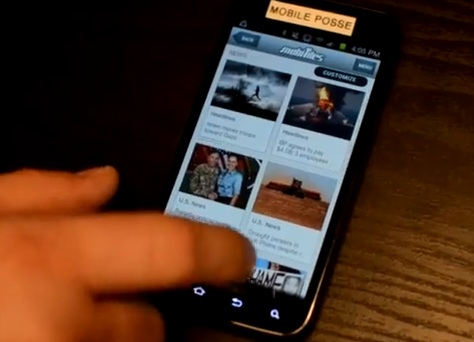The results of new Arbitron Mobile research show the technique drives app usage more than social media.
Mobile Posse has now released the results of a non-commissioned study that was conducted by Arbitron Mobile, which has revealed that the MobiTiles home screen messaging mobile marketing technique helps to boost app usage at a rate that is greater than that of Facebook, Gmail, Youtube, Instagram, and other social media.
The study involved considerable tracking of a large group of customers that use MobiTiles.
The mobile marketing research was conducted over a period of three months that ended in March 2013 and involved the tracking of approximately 3,000 consumers who were already using the MobiTiles from Mobile Posse. The service was used on a dozen various Android operating system models that were produced by many OEMs, including Samsung, Huwei, LG, and ZTE.
The research indicated that mobile marketing with the MobiTiles home screen messaging had a significant advantage.
 This third party study clearly indicated that mobile marketing through the home screen messaging platform from Mobile Posse was the leader in its ability to drive consumer engagement with smartphone and tablet apps, when compared to a long string of commonly used social media alternatives. The findings were especially surprising when compared to the results that were achieved by Facebook, which has also recently launched its own home screen messaging environment.
This third party study clearly indicated that mobile marketing through the home screen messaging platform from Mobile Posse was the leader in its ability to drive consumer engagement with smartphone and tablet apps, when compared to a long string of commonly used social media alternatives. The findings were especially surprising when compared to the results that were achieved by Facebook, which has also recently launched its own home screen messaging environment.
The Arbitron Mobile study also looked into the difference that home screen messaging can make for carriers, app developers, and handset manufacturers, as opposed to simply analyzing the impact on mobile marketing companies.
In terms of the data from this mobile marketing study, there was considerable advantage seen through the use of Mobile Posse as opposed to the next top performer, Facebook. Gmail came in third on the list. Mobile Posse averaged 88.1 sessions per month, with a monthly reach of 95.3 percent and an average of 152.1 minutes per month. Facebook averaged 73.8 sessions, with a monthly reach of 50.6 percent and an average of 215.6 minutes. Gmail saw a 44.2 percent average in sessions per month, with a monthly reach of 85.6 percent, and an average of 39.6 minutes.

 A recent InMobi study has shown that while the ideal hasn’t yet been reached, progress is being made.
A recent InMobi study has shown that while the ideal hasn’t yet been reached, progress is being made.